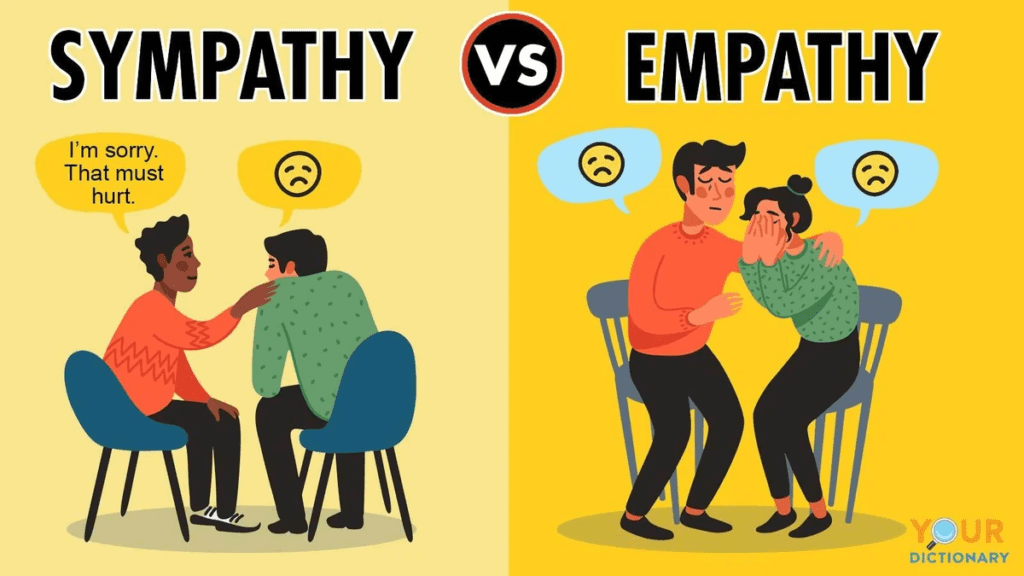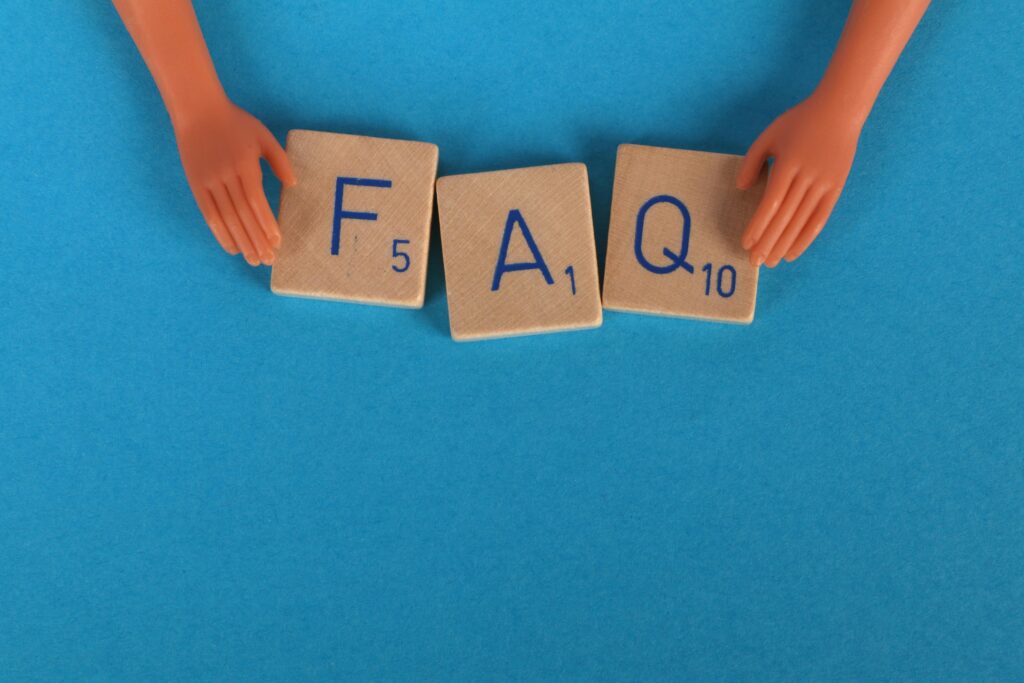Empathy and Sympathy: How to Distinguish Between Them

Empathy and Sympathy are responses to the feelings and experiences of others, recognizing the subtleties between them. It is pivotal for forging stronger, more meaningful relationships. The importance of this distinction not only lies in social interactions but also in various professional and personal settings, enhancing communication and emotional intelligence.
In this blog post we delve into the intricate nuances of understanding empathy and sympathy, offering insights into how each operates within interpersonal relationships. It provides a detailed exploration of the concepts, helping readers to remember the difference and apply this knowledge in real-life scenarios.
Difference Between Empathy and Sympathy
Table of Contents
Toggle
Empathy
1) Involves understanding experiences and emotions.
2) You feel with someone.
3) Promotes connection as you step into another person’s shoes.
Sympathy
1) Concerned with feelings of pity.
2) Involves feeling for someone.
3) Can create distance as you’re observing someone else’s hardship.
Understanding Sympathy

Definition of Sympathy
Sympathy, often described as a feeling of care and concern for someone else’s situation, arises from an awareness of another’s suffering or sorrow. This emotional response does not necessarily involve sharing the exact feelings of the other person but focuses on acknowledging and expressing concern for their situation .
Examples of Sympathy
Sympathy manifests in various ways, such as feeling compassion for a friend going through a difficult time, or expressing condolences when a coworker’s pet dies. It involves a third-person perspective where one may feel happy for someone when good things happen and sad for them during misfortunes. Actions like sending sympathy cards or flowers, offering words of support, or helping someone in distress are practical demonstrations of sympathy. These gestures, while they do not share the person’s exact emotions, signify an acknowledgment of their hardship and an offer of support .
Sympathy plays a crucial role in social interactions by maintaining necessary social norms and helping to stabilize relationships when they are not intimately close. It is a pro-social attitude that motivates individuals to act kindly and supportively towards those in need, driven by a desire for the well-being of others.
Understanding Empathy

Definition of Empathy
Empathy involves the action of understanding, being aware of, being sensitive to, and vicariously experiencing the feelings. And the thoughts, and experiences of another without having those feelings directly communicated in an explicit manner. It is often described as the ability to step into someone else’s shoes, to understand and share their feelings.
Examples of Empathy
Empathy manifests in various forms, such as emotional empathy, where one might feel distress in response to someone else’s pain, or cognitive empathy. Which involves understanding the emotions of others without necessarily sharing those emotions. For instance, witnessing someone in distress and feeling compelled to help reflects compassionate empathy, which combines understanding with a drive to assist. Another example is a person using cognitive empathy to understand a friend’s problem without feeling the same emotions. Which allows for supportive but emotionally detached advice.
Empathy extends beyond simple emotional contagion or shared feelings; it encompasses a deeper connection that involves both emotional and cognitive processes. This dual aspect of empathy enables individuals to not only feel what others are feeling but also to understand and react appropriately to those feelings. And making it a fundamental component of effective interpersonal interactions and moral decision-making.
How to Remember the Difference Between Empathy and Sympathy
Tips to Distinguish
To effectively distinguish between empathy and sympathy, it’s helpful to consider the depth of emotional engagement. Empathy involves immersing oneself in another’s emotional state, truly feeling what they feel as if one were in their position . This can often require a significant emotional and mental effort, as one must not only recognize but also share the feelings of another .
Sympathy, on the other hand, while still caring and supportive, maintains a certain emotional distance. It involves recognizing someone’s distress and offering comfort, but not necessarily feeling the emotions oneself . Sympathy might manifest as sending a condolence card—acknowledging the grief but not feeling it as deeply as the affected would .
Common Mistakes
One common mistake is confusing sympathy with empathy, treating them as if they require the same level of emotional involvement. For instance, saying “I’m sorry for your loss” is an expression of sympathy, not empathy. Because it does not involve sharing the emotional experience of the bereaved .
Another frequent error is the assumption that empathy always leads to direct action or advice. True empathy often involves simply being present and sharing in someone’s emotional state without necessarily offering solutions or unsolicited advice. This is particularly important in sensitive situations where the person may need to feel understood rather than advised.
By keeping these distinctions and common pitfalls in mind, individuals can better navigate their responses to others’ emotional states. And providing the appropriate support whether it be through empathy or sympathy.
Benefits and Drawbacks of Empathy and Sympathy

When to Use Empathy
1) Empathy should be employed when a deeper connection and understanding are required.
2) It involves genuinely feeling with the person, sharing their emotional experience as if it were your own.
3) This form of emotional engagement is crucial in close relationships or situations. where someone needs more than just acknowledgment of their feelings—they need to feel truly understood and supported .
4) The benefits of using empathy include creating stronger bonds and fostering trust and openness. It allows for a more authentic connection and can be profoundly supportive to someone going through a tough time.
When to Use Sympathy
1) Sympathy is most appropriate in situations where maintaining a certain emotional distance is necessary.
2) It allows individuals to express concern and acknowledge another’s distress without fully immersing themselves in the emotions of the situation.
3)This can be particularly useful in professional settings or with acquaintances where deep emotional connections are not present or appropriate.
4) For example, offering condolences in the event of a loss or expressing concern for someone’s misfortune without becoming emotionally overwhelmed is where sympathy plays a vital role.
Importance Of Sympathy and Empathy In Professional Communication
In the professional sphere, mastering emotional intelligence which includes understanding the difference between sympathy and empathy, is essential. Misusing these terms can lead to misinterpretations and strain business relationships. Here are some practical tips for applying sympathy and empathy correctly:
1) Listen actively: Pay attention to words, tone and body language to understand what the other person is experiencing.
2) Respond thoughtfully: Use language that communicates your shared experience (empathy) or your concern for their situation (sympathy).
3) Validate emotions: Acknowledge the other person’s feelings without judgment.
Conclusion
Through this exploration, we’ve crystallized the essential disparity between empathy and sympathy, unraveling their unique roles in enhancing our interpersonal relationships and emotional intelligence. The capacity to identify and employ empathy or sympathy appropriately not only fortifies our connections with others but also promotes a deeper understanding and mutual respect. By delving into the nuanced dynamics of these emotional responses, readers are better equipped. To navigate the complexities of human emotions, leading to more meaningful and supportive interactions.
Acknowledging the appropriate contexts for empathy and sympathy, and the impact of each on both the giver and receiver, underscores the significance of emotional wisdom in our daily lives. As we move forward, it’s crucial to reflect on how these understandings influence our approach to personal and professional relationships, encouraging a more empathetic and sympathetic world. This discourse invites further contemplation and application of empathy and sympathy, emphasizing their pivotal role in fostering a compassionate society.
Frequently Asked Questions (FAQ's)

1. What is the difference between empathy and sympathy?
Empathy and sympathy are both reactions to the suffering of others. The key difference lies in the nature of the response: sympathy involves recognizing and caring about another’s suffering, while empathy goes further by emotionally experiencing the pain alongside them. Sympathy expresses concern, whereas empathy involves sharing the emotional burden
2. What are some ways to express empathy rather than sympathy?
To show empathy, you can use various approaches:
- Acknowledge their bravery by saying things like, "Thank you for trusting me with this."
- Make sure you understand correctly by clarifying, "From what I'm hearing, you are feeling X."
- Boost their morale by affirming their character.
- Keep in touch to see how they are doing.
- Show that you genuinely care.
3. Is it possible to be empathetic without being sympathetic?
Yes, it is possible to be empathetic. While sympathy involves sharing emotions and often focuses more on the person expressing it, empathy requires a deeper understanding of another’s perspective. Empathy isn’t just about sharing feelings but also comprehending the thoughts and motivations behind those feelings.
4. How can I tell if I am more empathetic or sympathetic?
Understanding whether you’re empathetic or sympathetic depends on how you react to others’ distress. If you find yourself fully placing yourself in another’s situation, feeling what they feel, you are likely empathetic. If you tend to express concern and care about their situation without fully immersing yourself in their emotional state, you are more likely sympathetic.
5. Can you feel empathy but not sympathy?
Yes, you can feel empathy without necessarily feeling sympathy, especially if you understand someone’s perspective but don’t feel sorry for them.
6. Can you have empathy but not sympathy?
7. Can empathy and sympathy be learned?
Yes, both empathy and sympathy can be learned and enhanced through conscious effort, practice, and empathy-building exercises. Developing these emotional skills requires self-awareness, empathy training, and genuine efforts to understand and connect with others emotionally.
8. How do empathy and sympathy differ?
Empathy involves understanding and sharing another person’s feelings, whereas sympathy involves feeling concern, compassion, or pity for someone’s circumstances. Empathy is about emotional connection and perspective-taking, while sympathy is more about an emotional response to someone’s situation.
9. How can empathy be developed?
Empathy can be developed through active listening, perspective-taking, practicing non-judgmental understanding, and being mindful of others’ emotions and experiences. Engaging in diverse experiences and being open to different viewpoints also enhances empathy.
10. Is sympathy always helpful?
While sympathy often comes from a place of good intentions, it can sometimes be perceived as pity or condescension. It’s important to balance sympathy with empathy to truly understand and support others without imposing feelings of pity or assuming someone’s emotions.
